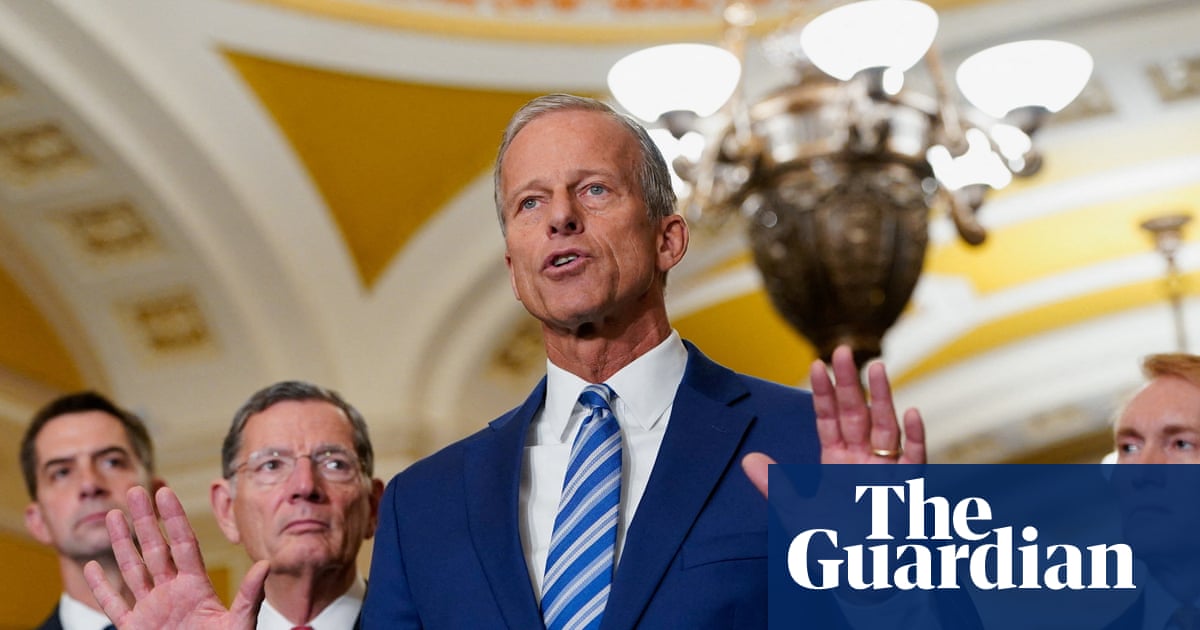When Regina Zàrate-Garcia was a child, she recalled being uprooted from one school district and planted in another as often as the seasons changed.
Zàrate-Garcia, now 18, was born in Salinas, California, to farm workers from Mexicali, a city just south of California on the US-Mexico border. “I remember my parents getting home and seeing their pants splashed in strawberries, mixed with that familiar smell of pesticides,” she recalls.
Her family’s life followed California’s planting and harvest seasons: starting school in Monterey county, where her parents worked April through November in the strawberry fields, then moving to Inyo county near the Nevada border – or sometimes back to Mexico – while her parents chased winter jobs or tried to live frugally while unemployed.
It took a toll on her. She described the isolation of struggling through a disrupted school curriculum alone, while her parents, exhausted from long days in the fields, and unable to read English, could offer no help. “My kindergarten teacher told my mom that I was gonna flunk,” Zàrate-Garcia said.
Then came a turning point: her mother learned about the Migrant Education Program (MEP), a federal initiative that supports children whose families move from place to place for seasonal agricultural work.
From first grade onward, Zàrate-Garcia went to after-school tutoring, Saturday school, summer enrichment, speech and debate tournaments, college readiness workshops, and was provided lunch, snacks, mentors and a community of kids who were navigating similar educational disruptions, cultural and language barriers, as well as social isolation.
“I didn’t feel like I had two different worlds coming against each other, and I felt more like a cohesive world that we were building together,” said Zàrate-Garcia. The MEP opened up the doors that got her where she is now: studying biology as a freshman at University of California San Diego.
But the future of this safe haven for the more than 250,000 eligible migratory children and youth, like Zàrate-Garcia, is now in jeopardy and could be slashed under the Trump administration. If this happens, Zàrate-Garcia fears the American dream will be out of reach for future generations of kids whose parents’ labor forms the backbone of the country’s economy and food system.

Trump’s 2026 budget, which is set to be debated by Congress this fall, proposes eliminating all funding for the MEP, a program that’s been in place for nearly 60 years. (This budget is separate from the Republican budget bill passed this summer, the One Big Beautiful Bill Act.)
‘The migrant program changes lives’
The MEP was also thrown into chaos this summer, when the Trump administration abruptly froze nearly $7bn in congressionally approved education funds from the 2025 budget. The funds were eventually released in late July after a coalition of 24 states, including California, sued the Trump administration, and 10 senate Republicans signed a public letter urging the White House to release them.
Nowhere would the impact of these proposed cuts be felt more than in California, where one out of three migrant students in the US lives. In California, the MEP serves nearly 80,000 youth ages three to 21, most of whom live in rural areas. In Monterey county, an agricultural region about two hours south of San Francisco where Zàrate-Garcia was born, there are over 10,000 students who are eligible for this support.
“The migrant program changes lives,” said Constantino Silva, senior director of migrant education services at the Monterey county office of education in Salinas.
He knows this firsthand; Silva too went through the program. Born in Michoacán, Mexico, Silva remembers his family traveling to the US embassy in Mexico City when he was six to obtain green cards before resettling in King City, California, where his father laid the pipes to irrigate crops.
“We have the misfortune of having the word ‘migrant’ in our title” Silva said of the cuts to the MEP.
The justification for targeting the migrant program’s funding is that it is deemed costly, ineffective, and harmful to students’ stability, arguing it encourages mobility and allows ineligible non-citizens to strip resources from US university students.
But that’s not true, Silva says, explaining that agricultural work is by its nature seasonal and migratory.
“Being migratory is really difficult,” Silva said, describing the toll on children who are always “the new kid”, out of place, and struggling with disrupted schooling. Families often live two or three families to a house, moving whenever work dries up. Farm labor, he added, is grueling, low-paid, and unpredictable, leaving entire families at the mercy of the weather and crop-cycles.
Food insecurity, inadequate or nonexistent healthcare, and chronic absenteeism combined with inconsistent credit transfers from one school district to another often puts these kids at high risk of school failure or dropout. A number of studies have found migrant children and youth to have high rates of grade repetition and about 50% drop out of high school.
The US Department of Education doesn’t track graduation rates for students in the Migrant Education Program, so it’s hard to get accurate data on how many kids follow their parents into the fields versus moving on to better-paying jobs. US federal labor law allows farm worker kids to pick crops with their parents’ consent, outside school hours, from as young as age 12.
The program was set up to address some of these disadvantages. Silva said he flourished in the program and runs through a list of teachers, vice principals, principals, program directors, assistant superintendents, and a superintendent, all of whom found success in education because of their childhood experience in the program.
“We look back on it and say: ‘Had it not been for that, I don’t know that I would be where I am today.’” said Silva. “‘This is where I can be myself and not feel out of place, where I’m safe to say that I don’t know, that I’m not sure, that I have questions.’ That’s the type of environment that we create for the migrant students.”
Support beyond the classroom
Silva says the key part of the program – along with all the tutoring, socializing and yummy snacks he got – was that his mother also received parent education services that helped her advocate for him as they navigated the US education system, even after he no longer qualified for the program.
Starting at three-years-old, Silva’s team visits children’s houses to get parents reading bilingual books to their children, empowering “parents to be the first teacher”.
Silva said they don’t check children’s legal status before providing services, but said that many students are US citizens, like Zàrate-Garcia, or residents with legal status, like him.
“It’s worth investing in these children’s future, because it’s America’s future,” said Silva, whose own job is now on the line due to the cuts.
In Salinas, many children of farm workers assume they’ll follow their parents into the fields; becoming an attorney or doctor seem beyond their possible horizons. But starting in third or fourth grade, Zàrate-Garcia said the MEP drew a different path – literally – on the floor out of chalk to change these narratives.
Each summer, MEP staff sketched a giant game of hopscotch in chalk, each square a milestone: grades one through five, middle and high school and graduation. A student volunteered to stand there in a cap and gown waving at Zàrate-Garcia as she hopped across a milestone, living proof of what was possible. Beyond that, new boxes branched out – college, university, trade school, the military – options that once felt out of reach.
For Zàrate-Garcia this unlocked possibilities: “It showed you the timeline of everything and really put it into perspective for the kids.”

After-school tutoring provides students with academic support, meals like flautas and burritos, and a safe place to be while parents work, while also engaging parents through monthly activities and parent-teacher nights.
Zàrate-Garcia spent seven years doing speech and debate tournaments, which taught her about teamwork, how to write argumentative essays, do research backed by credible sources, defend her claims, enunciate, project her voice and debate in a way that is respectful.
Zàrate-Garcia found that she loved public speaking, storytelling and improvising speeches on the spot: “I could make my voice into something powerful. I could make a language that I always struggled in, into something powerful.”
The program also helped students buy presentable outfits for their debate tournaments.
Her team even won second and third place at county and state level speech and debate tournaments over the years. Now, Zàrate-Garcia aspires to become a pediatric oncologist.
“The power of your voice is something that nobody else can take away,” she said. Once you have an education, nobody can take that away from you.”
When Zàrate-Garcia found out about the budget cuts, she was volunteering in the MEP’s summer program and the kids were all practising a dance to show their parents. “Honestly, we felt like crying,” she said, realizing that all the kids she coaches in speech and debate – kids who look up to her – may never thrive without the crucial support that she benefited from.
“You meet these kids that have so much potential, but their potential can’t be tapped into because they don’t have that support at home … It’s just so disappointing.”

 German (DE)
German (DE)  English (US)
English (US)  Spanish (ES)
Spanish (ES)  French (FR)
French (FR)  Hindi (IN)
Hindi (IN)  Italian (IT)
Italian (IT)  Russian (RU)
Russian (RU)  3 weeks ago
3 weeks ago
























Comments